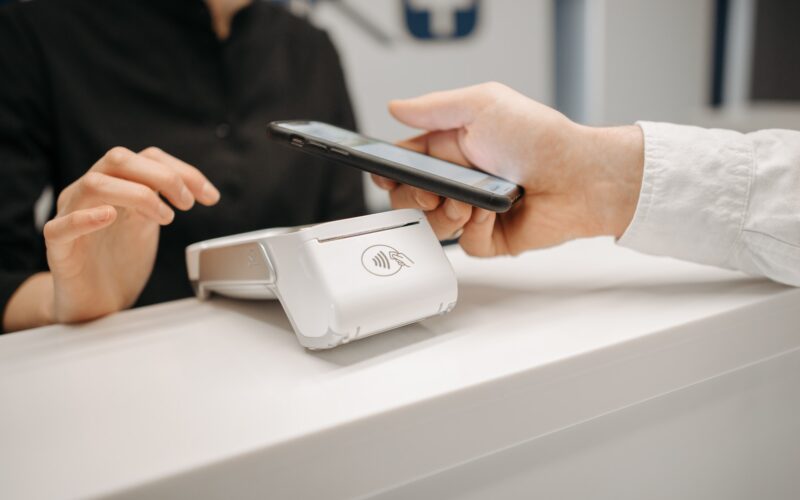Negotiating high-risk merchant account fees can be a daunting task for any business owner. With the potential for higher fees and stricter regulations, it’s important to prepare and strategize before entering into negotiations with merchant account providers. In this article, we’ll explore tips and strategies for negotiating high-risk merchant account fees, alternative payment options, and understanding the industry as a whole.
Tips to Negotiate High Risk Merchant Account Fees
How to prepare for negotiating merchant account fees?
Preparing for negotiations is crucial when it comes to high-risk merchant accounts. It’s important to understand your business’s needs, financials, and risks before entering into negotiations with providers. Assessing your business’s risk level, revenue projections, and cash flow is a great place to start.
Another important aspect of preparation is researching the market and comparing rates and fees from different merchant account providers. This will not only give you a better understanding of what to expect in terms of fees but also give you leverage when negotiating with providers. Finally, it’s important to have a clear understanding of your business’s financials, including revenue, expenses, and profit margins. Having this information readily available will make negotiations smoother and more efficient.
What documents are required for a high-risk merchant account application?
When applying for a high-risk merchant account, there are several documents that you’ll need to provide. These include a government-issued ID, business registration documents, financial statements, bank statements, and proof of business address. Additionally, if your business is in certain industries such as pharmaceuticals or firearms, you may need to provide additional documentation and certifications.
It’s important to have these documents readily available and organized before applying for a merchant account. This will not only speed up the application process but also improve your chances of approval. Keep in mind that different providers may have different requirements, so it’s always best to check with the provider directly to ensure you have all of the necessary documents.
Strategies to Lower High Risk Merchant Account Fees
How to negotiate with merchant account providers?
Negotiating with merchant account providers can be a daunting task, especially when it comes to high-risk businesses. However, there are several strategies you can use to lower fees and improve your overall negotiating position. One strategy is to leverage your business’s history and revenue projections to negotiate lower fees.
Another strategy is to negotiate a longer-term agreement with the provider. Providers may be more willing to offer lower fees if they know they have a long-term commitment from your business. Additionally, you can ask for a lower discount rate in exchange for higher transaction volumes. Ultimately, the key to successful negotiations is to have a clear understanding of your business’s needs and the market in which you operate.
What factors affect high-risk merchant account fees?
Several factors can affect high-risk merchant account fees, including your business’s industry, risk level, and transaction volume. Businesses in high-risk industries such as adult entertainment or online gambling may be subject to higher fees due to increased regulatory scrutiny. Additionally, businesses with higher risk levels, such as those with a history of chargebacks or fraud, may also face higher fees.
Transaction volume is another factor that can affect fees. Providers may offer lower fees for businesses with higher transaction volumes, as they are able to spread their risk over a larger number of transactions. Ultimately, the best way to reduce fees is to have a clear understanding of the factors that affect fees and negotiate with providers accordingly.
How to find the right merchant account provider for your business?
Finding the right merchant account provider is crucial for any business, but especially for those in high-risk industries. When looking for a provider, it’s important to consider factors such as fees, services offered, and regulatory compliance.
One strategy is to work with a provider that specializes in high-risk merchant accounts. These providers have experience working with businesses in high-risk industries and are often better equipped to handle the unique challenges these businesses face. Additionally, it’s important to look for providers that offer comprehensive services, including fraud prevention and chargeback management. Finally, it’s important to ensure that the provider is fully compliant with all relevant regulations and has a strong reputation in the industry.
Alternative Payment Solutions for High-Risk Merchants
What are the best alternative payment options for high-risk merchants?
As high-risk businesses face more stringent regulations and higher fees, many are turning to alternative payment solutions as a way to reduce costs and improve customer experience. Some popular alternatives include e-wallets, prepaid cards, and cryptocurrency.
E-wallets such as PayPal and Apple Pay are becoming increasingly popular among consumers, and offer a convenient and secure way to make payments online. Prepaid cards are another popular option, as they allow consumers to make payments without the need for a traditional bank account. Finally, cryptocurrency, such as Bitcoin or Ethereum, provides a decentralized and secure way to make payments online.
How to integrate alternative payment solutions to your high-risk business?
Integrating alternative payment solutions into your high-risk business can be a great way to reduce fees and improve customer experience. To get started, it’s important to research and compare different providers and choose one that meets your business’s needs.
Once you’ve chosen a provider, it’s important to integrate their payment gateway into your website or POS system. This process can vary depending on the provider and the platform you’re using, but most providers offer comprehensive documentation and support to help you get started. Finally, it’s important to educate your customers about the new payment options and ensure that they feel comfortable using them.
What are the benefits of offering alternative payment options to customers?
Offering alternative payment options to customers can have several benefits for high-risk businesses. First, it can reduce fees and improve cash flow by providing a more cost-effective way to make payments. Second, it can improve customer experience by providing a more convenient and secure way to make payments online. Finally, offering alternative payment options can help businesses stay competitive in the market and attract new customers who are looking for more flexible payment options.
Understanding the High-Risk Merchant Account Industry
What defines a high-risk business?
A high-risk business is one that is deemed to be at a higher risk of fraud, chargebacks, or regulatory non-compliance. This can include businesses in industries such as adult entertainment, online gambling, or pharmaceuticals, as well as businesses with a history of chargebacks or fraud.
How do high-risk merchant account providers mitigate risks?
High-risk merchant account providers use several strategies to mitigate the risks associated with high-risk businesses. These can include more stringent underwriting and due diligence processes, as well as fraud prevention and chargeback management services. Additionally, providers may offer risk monitoring and reporting tools to help businesses stay on top of potential issues.
What are the regulations governing high-risk merchant accounts?
High-risk merchant accounts are subject to a range of regulations governing issues such as anti-money laundering, fraud prevention, and data security. These regulations can vary depending on the jurisdiction and the industry in which the business operates. Businesses that operate in multiple jurisdictions or industries may face additional regulatory compliance requirements.
What are the compliance requirements for high-risk businesses?
Compliance requirements for high-risk businesses can include measures such as KYC (know your customer) and AML (anti-money laundering) checks, as well as PCI (Payment Card Industry) compliance and data security measures. Additionally, businesses may need to comply with industry-specific regulations, such as those governing pharmaceuticals or firearms. It’s important for businesses to stay up-to-date on the latest regulatory requirements and ensure that they are fully compliant at all times.
Negotiating high-risk merchant account fees can be a challenging task, but with the right preparation and strategies, it’s possible to find a provider that meets your business’s needs. Additionally, alternative payment options and a clear understanding of the industry can help businesses reduce fees and stay competitive in the market. By staying informed and taking a proactive approach to negotiations and compliance, high-risk businesses can thrive and succeed in today’s digital economy.













